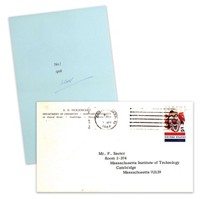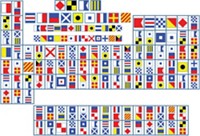Advertisement
Grab your lab coat. Let's get started
Welcome!
Welcome!
Create an account below to get 6 C&EN articles per month, receive newsletters and more - all free.
It seems this is your first time logging in online. Please enter the following information to continue.
As an ACS member you automatically get access to this site. All we need is few more details to create your reading experience.
Not you? Sign in with a different account.
Not you? Sign in with a different account.
ERROR 1
ERROR 1
ERROR 2
ERROR 2
ERROR 2
ERROR 2
ERROR 2
Password and Confirm password must match.
If you have an ACS member number, please enter it here so we can link this account to your membership. (optional)
ERROR 2
ACS values your privacy. By submitting your information, you are gaining access to C&EN and subscribing to our weekly newsletter. We use the information you provide to make your reading experience better, and we will never sell your data to third party members.
Education
Newscripts
Bogus Research, Even-More-Bogus Researcher
by Jeff Huber
December 15, 2014
| A version of this story appeared in
Volume 92, Issue 50

Peer-reviewed journals usually frown on the use of obscenities. So when a paper titled “Get Me Off Your [Expletive] Mailing List” was recently reviewed and accepted by the International Journal of Advanced Computer Technology (IJACT), more than a few eyebrows were arched.
The profane paper is the creation of Eddie Kohler, now at Harvard University, and David Mazières, now at Stanford University. In 2005, the computer science professors were annoyed by the amount of spam e-mail they were receiving from an illegitimate research conference soliciting paper submissions. Eager to communicate their desire to be left alone, the duo wrote and submitted “Get Me Off Your [Expletive] Mailing List,” which is laid out like a normal research paper, complete with abstract, headings, subheadings, and concluding summary. The only difference is that unlike a normal research paper that features actual research, Kohler and Mazières’s paper features its titular phrase repeated over and over again, 863 times, for its entire 10 pages.
Upon submitting the paper to the conference organizers, Mazières also sent it to friends and posted it online. In time, the composition attracted quite the following. It became so popular, in fact, that when Peter Vamplew, a computer scientist at Federation University Australia, received notification of a call for papers from the dubiously credentialed IJACT, he decided to submit Kohler and Mazières’s creation.
Surprisingly, the journal didn’t take the paper’s not-so-subtle hint. Instead, it actually accepted the paper, sending Vamplew a peer reviewer’s report in which the submission’s accuracy was deemed “excellent” and its quality of writing “very good.” The journal then told Vamplew that he simply needed to wire $150 to complete the publication process.
“My first reaction on receiving the acceptance letter was disbelief, followed shortly thereafter by fits of laughter, then a moment of panic when I realized I’d just inadvertently had someone else’s paper accepted for publication,” Vamplew tells Newscripts. But “as you’d expect from someone who would write that paper in the first place, Mazières appreciated the humor of the situation.”
Someone else who can appreciate the humor in obscenity-laced research is William G. Hoover. The retired Lawrence Livermore National Laboratory physicist made waves earlier this fall when the Parolacce blog, which calls itself “the only Italian scientific blog on profanity,” uncovered that in the late 1980s Hoover published journal articles alongside a fictional coauthor named Stronzo Bestiale—a moniker that, according to Hoover, translates from Italian as “total a**hole.”

The origin of Stronzo Bestiale begins in 1987, when two of Hoover’s research papers were rejected. Distraught after receiving these decisions, Hoover flew to a physics meeting in Paris, and during the flight, he overheard two Italian women using the phrase “stronzo bestiale.”
“I asked an Italian physicist at the meeting about this and concluded Bestiale would be an excellent coauthor for publications whose editors had rejected my earlier work,” Hoover tells Newscripts. Soon thereafter, Bestiale appeared as a coauthor in one such publication, the Journal of Statistical Physics (1987, DOI: 10.1007/bf01019693).
News of Hoover’s mischief has certainly struck a chord. Novelty clothing company Albany Retro, for instance, currently sells T-shirts adorned with the fictional researcher’s name. Given Bestiale’s Italian heritage, this entry into the world of fashion feels like a fitting conclusion to an impressively fabricated career.
Jeff Huber wrote this week’s column. Please send comments and suggestions to newscripts@acs.org.





Join the conversation
Contact the reporter
Submit a Letter to the Editor for publication
Engage with us on Twitter